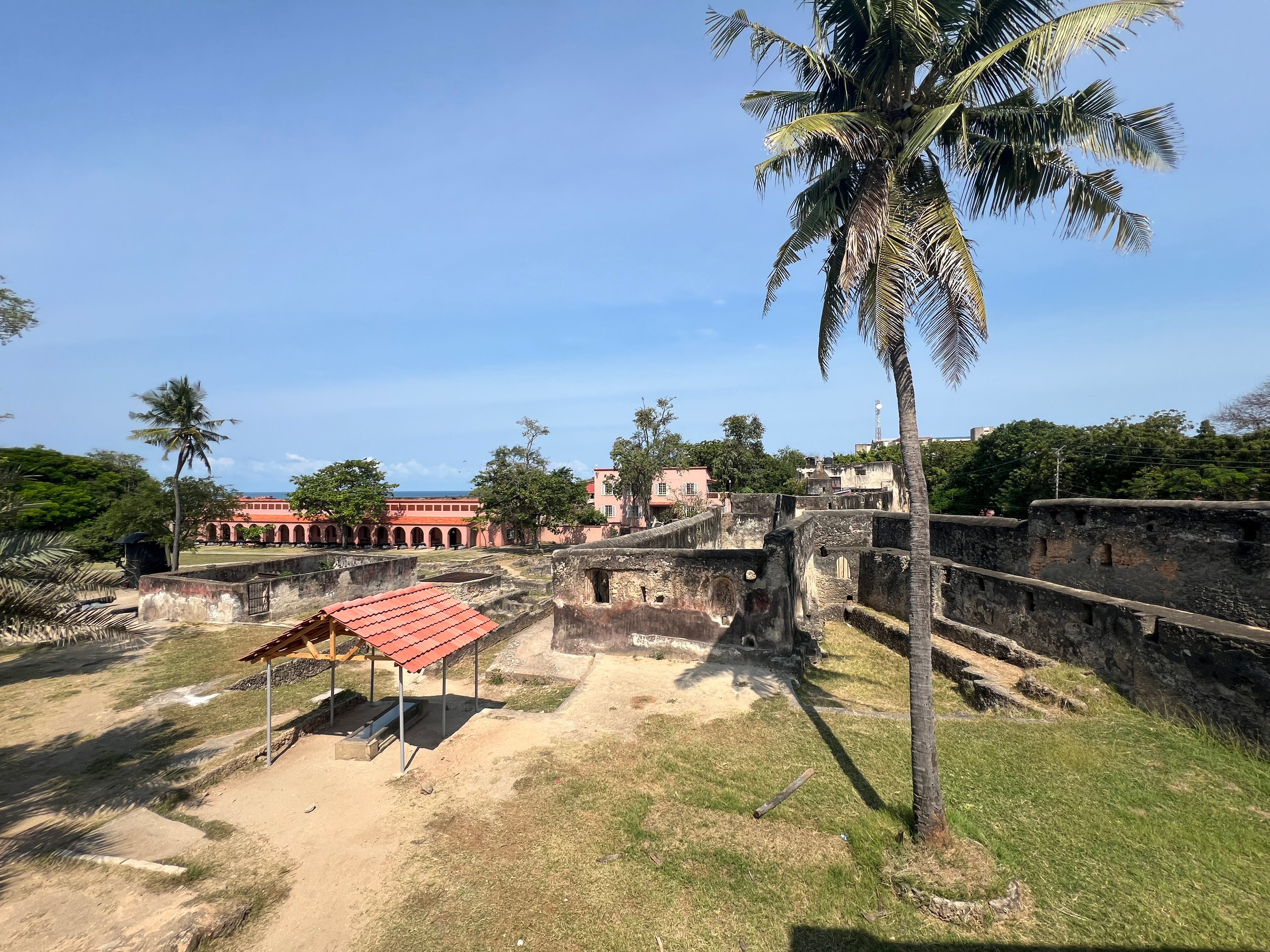Field Visit 3: Mombasa
This week, I had the opportunity to go to Mombasa, the oldest city in Kenya, largest port in East Africa, and cultural center for the Swahili Coast. While I was originally slated to travel to Marsabit County, along Kenya's northern border with Ethiopia, I was barred from going two days before departure due to security concerns. Mombasa was not an original participant in our One Health outreach program, but it is a GIS-established PHEOC and the county participates in GIS’s Biological Risk Mitigation mentoring program. I took the Nairobi-Mombasa Standard Gauge Railway, a new Belt and Road investment by China, and met up with Evelyn, a GIS staffer who I'd previously worked with in Nakuru.
Mombasa County houses a unique public health and One Health system in Kenya. Due to its long history and established governance structures, Mombasa County is one of the few counties in the country that has a full fledged County Emergency Operations Center, dedicated to emergencies of all kinds and with its own dedicated staff, outside of the Public Health Emergency Operations Center. This is in addition to a well-supported county Department of Public Health, that can collect extensive vital statistics and even has morbidity and mortality data detailed enough to reportr in IHME burden of disease format. This results in their PHEOC staff having a massively reduced scope of practice, compared to other PHEOCs in Nakuru and Kitui. The PHEOC resides in a small building on the complex of the Department of Public Health, and when activated resembles more of a conduit of information between the highly-autonomous sub-county public health rapid response teams, the County Public Health Department, and the National PHEOC, instead of an “operations center.”
Due to the efficiency (and institutional inertia) of Mombasa’s county government, they have been slow to adopt the public health management innovations sweeping the rest of Kenya. The PHEOC was one of the last ones established by GIS using CDC’s COVID-19 emergency funding, and it still has to fight to get information and be looped in during events of public health importance. This also means that they are behind on One Health. The PHEOC and the County get high marks in GIS’s PHEOC assessment on the whole, but they fail the one health section (their only section fail in the whole assessment)
This presented both an opportunity and a challenge. They had a chance to learn from the experiences of Nakuru and other PHEOCs in large cities that had successfully integrated One Health, but they have to adopt it to an extremely complex political situation. This difference allowed us to learn more about how the political elements of public health management could affect the One Health Self-Assessment checklist, and let us add another participant to checklist distribution.
Outside of work, I had the chance to explore some of Mombasa's colonial past by visiting Fort Jesus, the Old Town, and the Commonwealth War Cemetery. It was interesting seeing the literal ruins of past colonialism while modern day Kenyans protested against the perceived new colonialism of institutions such as the World Bank and the IMF. A side effect of this colonisation is the prevalence of tuk-tuks, masala chai, and other Indian imports around Mvita island, the core of Mombasa city.
Additionally, my experiences across this scholarship precipitated some thinking about this scholarship, the fact that us generally privileged westerners have the opportunity to receive these sorts of resources and travel to these countries for service and research. Where are the reciprocal opportunities? As an immigrant to the US myself, whose parents came here to study and stayed, I am familiar with the varied challenges of immigrating to the US, but these challenges are magnified tenfold nowadays.
A view of the ruins of Fort Jesus:


Please sign in
If you are a registered user on Laidlaw Scholars Network, please sign in